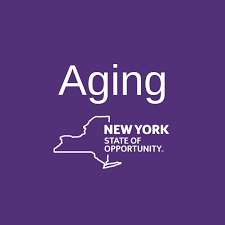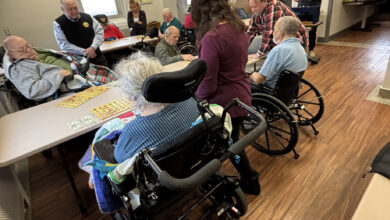Employer participation urged in Working Caregivers campaign

The New York State Office for the Aging (NYSOFA), the New York State Department of Labor (NYSDOL) and partner agencies have launched a Working Caregivers initiative to address the unique stresses experienced by individuals who are balancing work with a caregiving role.
A caregiver is a family member, friend or neighbor who provides uncompensated care and support to someone else, such as a spouse, an older parent, child, or someone with chronic or other medical conditions. More than half of unpaid caregivers don’t even self-identify as caregivers.
As part of the Working Caregivers initiative, NYSOFA is asking New Yorkers to complete a statewide survey (https://www.surveymonkey.com/r/WorkingCaregiverSurvey) to assess specific challenges faced by individuals in this role.
NYSOFA Director Greg Olsen said, “Any caregiver is susceptible to feelings of burnout and other associated mental health, social or economic impacts. Our statewide survey has already begun to collect important data on the experiences of working caregivers in New York State, 32% of whom are assisting individuals for 22 hours or more every week. But the impact is two-fold, affecting employers as well as employees.”
According to national data, U.S. businesses lose as much as $33.6 billion annually in caregiver-related turnover, absenteeism, and loss of productivity, according to one estimate. This includes situations where caregivers have no choice but to arrive late or leave work early, make phone calls during work time, leave work to respond to emergencies, or miss work altogether. Employees also have chosen to forgo promotions, have gone from full-time to part time or leave work altogether to continue their caregiving work.
For individuals providing care to an older person and a child at the same time, 85% experienced mental health symptoms and 52% reported suicidal thoughts, according to the U.S. Centers for Disease Control and Prevention. Other data from the National Alliance for Caregiving and AARP found that 70% of working caregivers suffer work-related difficulties due to their dual roles; and 69% of caregivers reported having to rearrange their work schedule, decrease their hours, or take unpaid leave in order to meet responsibilities.
NYSOFA and NYSDOL offer a Caregivers in the Workplace Guide with tips and resources for employers to help support working caregivers (https://aging.ny.gov/system/files/documents/2022/07/caregivers-in-workplace-guide-2022.pdf).
Olsen said, “Recognizing these unique stresses, we are leveraging support from private and public employers on an initiative to help all working caregivers at a time when 67% are missing days of work and 58% report being unable to focus while at work due to caregiver burden, according to preliminary results of our survey. A caregiver-responsive work environment is right for employees and employers alike. I encourage all employers to read our caregiving guide, share some of the support services already available for your employees, and ask employees to take our survey so that New York State can continue to advance caregiver-supportive policies.”
Provided information



